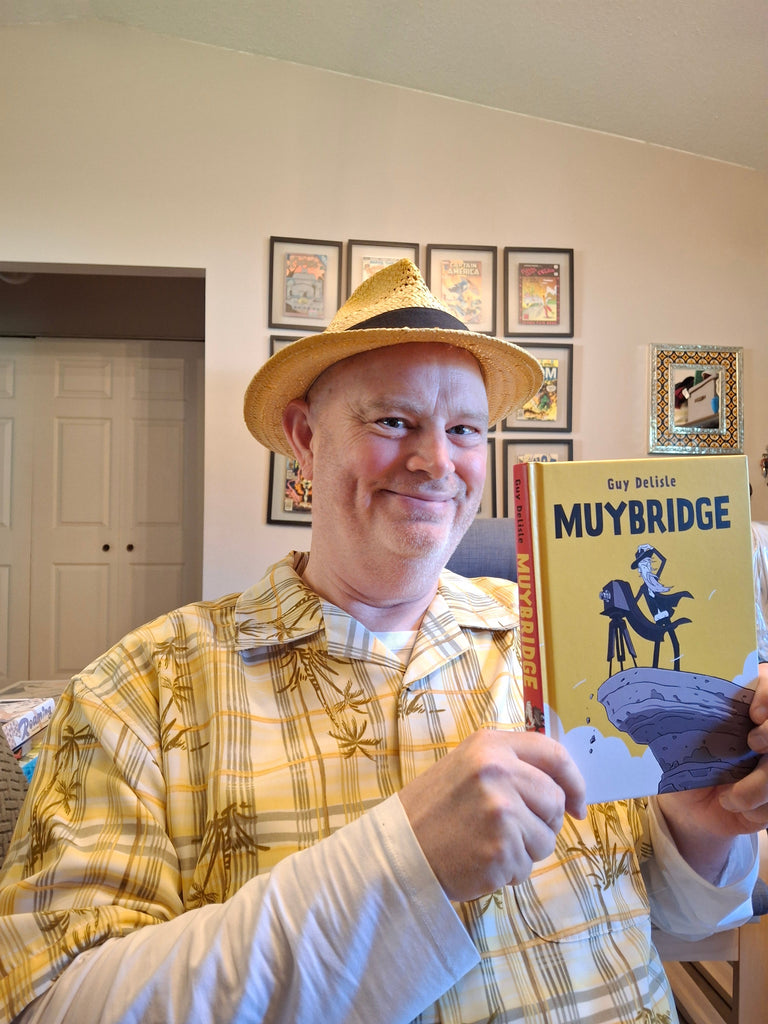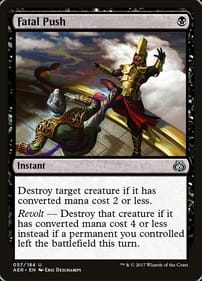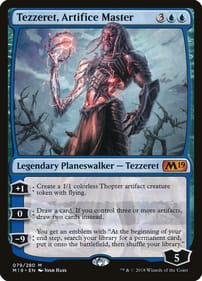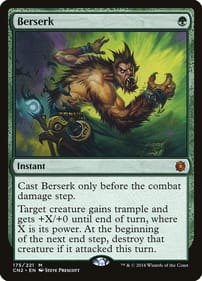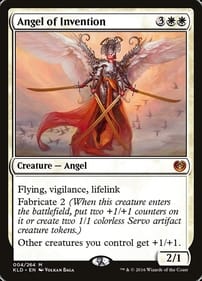Delisle Goes in new Direction with Muybridge
By Dan Brown Muybridge is a funny, thought-provoking portrait of a little-known historical figure that represents an interesting departure for Quebec comic maker Guy Delisle. Delisle, who lives in France, originally made his name with travelogues – like Pyongyang – and his volumes about sloppy parenting. In Factory Summers, he told the story of his teen years. With the exception of 2017’s Hostage, he has not focused on a main character other than himself. Now comes Muybridge, an inventor who was unknown to me before now. Published this spring, the new release is a biography of one of the pioneering minds who helped usher in the age of the photograph, as well as moving pictures – Englishman Eadweard Muybridge. I loved it. I should put my cards on the table: I feel the same way about pretty much all of Delisle’s output. His work has always been strong, in my opinion. And Muybridge – the book, not the man – may also be a bridge to a new kind of storytelling for Delisle. The most interesting bits of the narrative are the parts where Deslisle admits the historical record is incomplete. He does the best he can to recreate Muybridge and his times, but there are moments when he calls attention to the constructed nature of his account. There’s also no question Delisle imbues his central character with some of his own traits. That’s part of the fun. At one point, Delisle says the death of Muybridge’s wife “must have weighed heavily on him,” yet he doesn’t know for sure what he was feeling in that moment. Muybridge was one of the key innovators who helped solve a hotly debated question in the 1800s: Do a horse’s four hooves all leave the ground at the same time when the animal is at full gallop? You and I are used to a media-saturated world in which there are movies about horses, and races like the Kentucky Derby are televised. So keep in mind this was a period when good, old-fashioned painting was only gradually losing its status as the most important representation of reality. The story begins with the advent of early photos such as daguerreotypes. The same guy was also the accused in one of the most sensational murder trials of his day. In Delisle’s telling, he is tenacious and adaptable. Dealt a setback, it’s only a matter of time before he rises again. Along the way, Delisle refuses to play at omniscience in his narrative, reminding the reader multiple times of the gaps in his knowledge. On an early jaunt to France, for instance, Delisle depicts Muybridge peering in the window of a camera studio. Delisle asks, “Is that when he began practicing photography? We don’t know.” (If you’ve ever read Alice Munro's short stories, you’ll have noticed the same kind of narrative uncertainty, so it may be one of the writing quirks that marks Delisle as distinctively Canadian.) Muybridge lived from 1830 to 1904. We may think of those decades as somehow uneventful or idyllic, but it was an age of rapid change. It saw the invention of mass-market photography, recorded music, the paint tube, motion pictures, naughty photos, the phonograph (if the book has a villain, it’s Thomas Edison, who doesn’t come off well), impressionism, colour photography, and animation. I also enjoyed the parts in which Delisle uses comic panels to represent individual frames of a moving picture – he even gives a nod to the film The Matrix as one source of inspiration, driving the point home that Muybridge’s contributions were foundational. As I said, I wasn’t aware of Muybridge until I picked up the book. I recommend it. The truth is, I don’t believe there’s a person or topic Guy Delisle couldn’t make interesting. If you haven’t read his stuff, check him out. This comic creator is a national treasure. Dan Brown has covered pop culture for more than 32 years as a journalist and also moderates L.A. Mood’s monthly graphic-novel group.
New Oliveros Book Details FLQ’s Reign of Error
By Dan Brown The new book from cartoonist Chris Oliveros, Are You Willing to Die For the Cause?, is an insightful look at a dark chapter in Canadian history. It’s even, in a way, darkly funny.It’s the tale of a bunch of stumblebums cosplaying as terrorists who – if you believe them – didn’t set out to take any lives, but still ended up with plenty of blood on their hands.You know what happened during the October Crisis of 1970 in Quebec, right? Well, this graphic novel fills you in on what was happening in the decade prior to that pivotal moment. It is, in comic terms, the origin story of the FLQ, the group (I hesitate to call it an “organization”) that would eventually prompt Pierre Trudeau to trigger the War Measures Act.You may know Oliveros as the founder and former publisher of Drawn & Quarterly, which has become a force in the comics world since its inception in 1989.This volume is the first in a two-part series about the Front de Liberation du Quebec – the second book, yet to come, will deal with events that are better-known, like Trudeau’s hard-nosed response to the supposed “parallel power” that arose in la belle province by advocating, violently, for separation.By the end of the 1960s, different iterations of the FLQ had gained notoriety with, among other glorious feats, the blowing up of innocent Canada Post mailboxes. One FLQ honcho even imagined he was a contemporary of Fidel Castro, the communist revolutionary who had taken over Cuba not long before. If Oliveros’ goal is to show the would-be Quebec liberators to be amateurs, he does a good job.One of the FLQ members stores sticks of dynamite in his apartment pantry, next to the breakfast cereal his children eat. A guiding manifesto is dictated, seemingly improvised on the spot. And on at least one occasion, a bomber has to find his own way to the target site because no one in the FLQ has access to a car. (The authorities come across not only as inept, but corrupt to boot.)It’s clear the storytelling project here is to underline the difference between the grand ambitions of the terrorists, and how events actually played out in the real world. So the reader will see page upon page setting forth what was supposed to happen as envisioned in the plans of the FLQ’s commanders, followed by a second sequence outlining the less-than-impressive real results. Or Oliveros will depict a historical figure like former Montreal mayor Jean Drapeau recalling the reign of terror, then the next panels will outline what the historical record indicates really happened. For example, the FLQ robbery of a gun store in 1964 wasn’t supposed to go off the rails, no one was supposed to get hurt, yet the “panic and confusion” that ensues once the would-be terrorists storm the place turns the raid into a “fiasco” in which two employees are left dead. Oliveros goes over the scene several times to illustrate what happens in the fog of a play war.And in case you don’t agree with any of his conclusions, at the end of Are You Willing to Die For The Cause?, Oliveros carefully explains where he got key details, such as dialogue.Even better, the artist/writer pulls the curtain back on himself, showing the gaps in his own creative process. He is open about how he compressed some events in his narrative, and fictionalized other panels in the interests of clear storytelling, which makes sense: Although Oliveros was born in the 1960s, he wasn’t, you know, in the room where any of this happened.So it’s consistent with his overall project that he would point to the constructed nature of this comic. That doesn’t make the book any less tragic, or comedic. Of course, the ultimate irony is how despite all of the FLQ’s actions, including the dramatic and deadly ones that will be the subject of Oliveros’s next graphic novel, Quebec remains part of a united Canada. As this book demonstrates, the best-laid plans often go awry.Dan Brown has covered pop culture for more than 31 years as a journalist and also moderates L.A. Mood’s monthly graphic-novel group.


